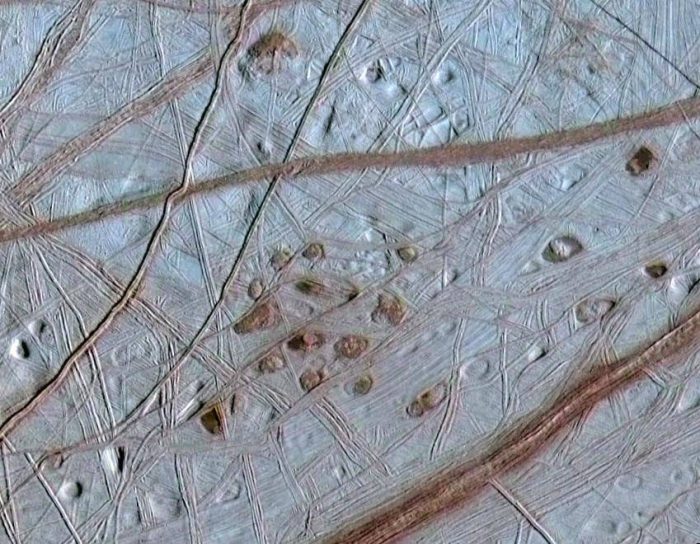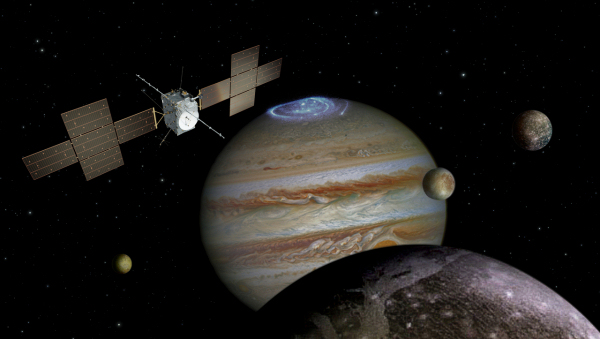Welcome back to our Science Odyssey Contest event, where we're posting STEM articles from May 2 to May 17. To enter the contest, you can find details at the bottom of this post.
Jupiter is our solar system's largest planet. It is also the subject of one of humanity's most successful active space probes, NASA's Juno.
Soon, Jupiter will be getting another probe sent to investigate its neighbourhood. But its main focus won't be the planet. Called JUICE, it will be focused on Jupiter's moons.
Freshly-squeezed spacecraft

Europa's icy surface is strangely beautiful. What's hidden underneath? (NASA/JPL/University of Arizona/University of Colorado)
Developed by the European Space Agency (ESA) for launch in May/June of 2022, JUICE stands for JUpiter ICy moons Explorer. And while Jupiter actually has a stunning 79 moons orbiting it, this probe will concentrate on just three of them: Europa, Ganymede, and Callisto.
Each one has a potentially ground-breaking story to tell about the development of our solar system, and even life.
- Europa is believed to have an underground saltwater ocean — one that potentially contains more water than on Earth!
- Ganymede (the solar system's largest moon and bigger than the planet Mercury) has its own magnetic field. This type of field is a key to life. Earth's magnetic field protects us from harmful radiation sent toward us by the Sun.
- Callisto has craters, much like our Moon, and is believed to be 'dead'. So why investigate it? Astronomers believe that it too could hold an underwater ocean.
In any of these cases, scientists believe that there could be the conditions for life. Add this on to the stories of Saturn's moons Enceladus and Titan, and there is suddenly a lot of potential for living things where few people ever imagined that they'd find them.
Patience, please
Probes like Juno, Cassini, and the Parker Solar Probe are thrilling for the revolutionary information that they bring us about our space neighbours. But some of them take a while to reach their destination. This will be especially true of JUICE.
Its launch is planned for two years from now. And it will take over seven and a half years to get to Jupiter's system. And then there's the time involved in analyzing the data that it sends back. In other words, we're going to have to wait until about 2030 to learn more.
So why talk about the probe now? For one, it's our Science Odyssey Content event! It's also a great reminder of how far in advance space exploration works (we don't even know what we're having for dinner tonight!).
But above all? It's super fascinating! For a deeper squeeze of JUICE's future, check out this video from Seeker below.
Contest alert
Don't miss our Science Odyssey Contest. Click HERE TO ENTER.

 An artist's impression of JUICE in orbit. The probe will be powered by the largest ever solar panel system on a spacecraft. (Copyright: Spacecraft: ESA/ATG medialab; Jupiter: NASA/ESA/J. Nichols (University of Leicester); Ganymede: NASA/JPL; Io: NASA/JPL/University of Arizona; Callisto and Europa: NASA/JPL/DLR)
An artist's impression of JUICE in orbit. The probe will be powered by the largest ever solar panel system on a spacecraft. (Copyright: Spacecraft: ESA/ATG medialab; Jupiter: NASA/ESA/J. Nichols (University of Leicester); Ganymede: NASA/JPL; Io: NASA/JPL/University of Arizona; Callisto and Europa: NASA/JPL/DLR)










Juicy!